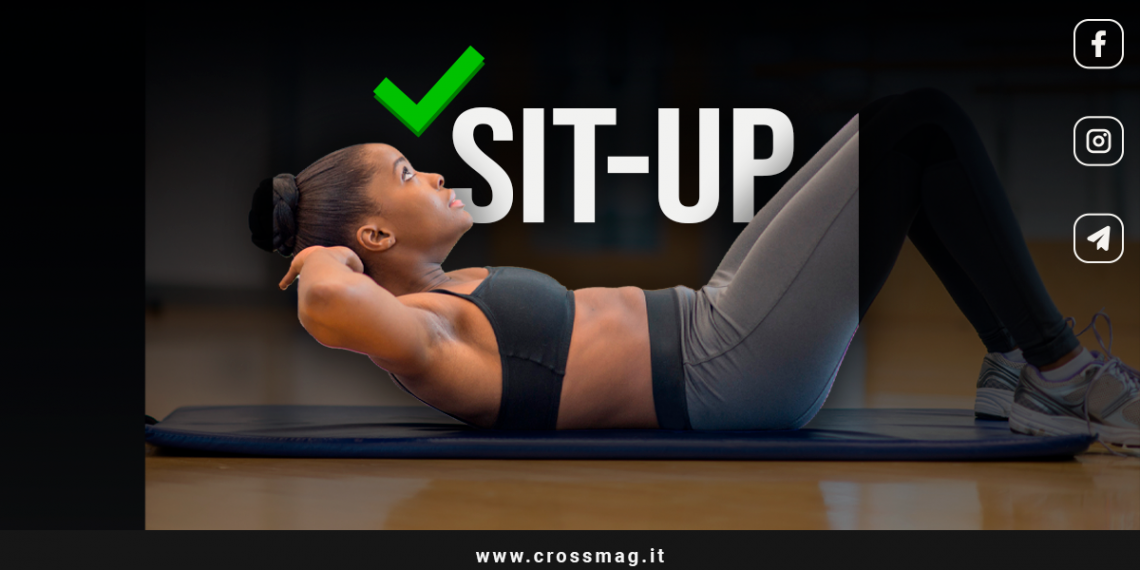The sit-ups are i classic exercises for the abdominals that are performed by lying on the back and lifting the torso; use your body weight to strengthen and tone the stabilizing abdominal muscles core.
This skill works the rectus abdominis, the transverse abdominals and the obliques, as well as the hip flexors, chest and neck; they promote good posture by working the lower back and gluteal muscles.
Thanks to a wide range of movements, sit-ups target more muscles than crunches and static core exercises.
This makes them an ideal addition to any fitness program; let's discover all their benefits.
Benefits 
Sit-ups are traditional core exercises often used in training programs due to their simplicity and effectiveness; here are their benefits:
- Force of the core: core strength is one of the biggest motivations for doing sit-ups; By strengthening, tightening and toning your core, you reduce the risk of back pain and injury
- Muscle mass improvement: this exercise strengthens the muscles of the abdominals and hips; performing sit-ups can help reduce the likelihood of sarcopenia, or the natural loss of muscle tone during aging
- Athletic performance: strong core musculature is linked to increased muscle strength and endurance in athletes; a strong core ensures correct posture, stability and form, allowing you to achieve high-level performance during any sport or physical activity
- Better balance and stability: a strong core helps keep the body balanced and stable during daily and sporting activities; the muscles of the pelvis, back and hip work together with the abdominal muscles
- Greater flexibility: moving the spine helps to loosen the stiffness and also that of the hips; sit-ups make the hips and back more flexible, increasing mobility and relieving tension and stiffness
- Posture improvement: the construction of a strong and solid core facilitates the alignment of the hips, spine and shoulders, helping to improve posture; the benefits of good posture are the reduction of pain and tension, the increase of energy levels and the improvement of breathing
- Reduced risk of back pain and injury: sit-ups also strengthen your lower back, hips and pelvis; a strong core makes it less likely injuries and injuries
- Strengthening the diaphragm: sit-ups are a great way to practice diaphragmatic breathing; they cause compression of the abdomen, which can have a positive effect on the diaphragm. A strong and healthy diaphragm can improve breathing, relieve stress, and increase stamina.
Sit-up exercises
Here are some sit-up exercises you can do:
- Traditional sit-ups: they are performed starting from the supine position, with the knees bent and the feet on the ground; from here it is required to lift the body by flexing the trunk and hips
- Sit-ups on the stability ball: The use of the stability ball helps prevent back pain by supporting the natural curve of the spine and reducing pressure on the vertebrae
- V-sits: This exercise helps develop balance, strength and coordination; the execution consists in bringing the legs perpendicular to the ground from a position where the hands are resting on the ground or parallel to each other.
And you, how many sit-ups do you perform in your workouts? Let us know in the comments and remember to follow us on our telegram channel











